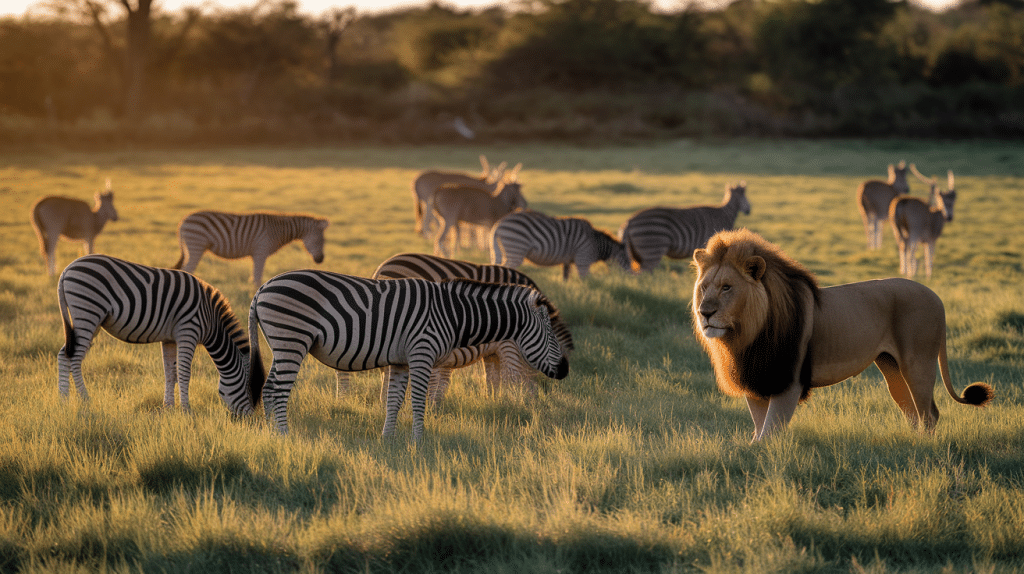How do grassland animals survive? They’ve changed over time to fit this setting. This blog showcases the ingenious ways animals have adapted to life in grasslands.
Grasslands cover about 25% of Earth’s land. Animals living in these open spaces face unique challenges. Hot summers, cold winters, limited water, and few hiding spots make life tough.
The blog explains these changes using clear examples from grasslands worldwide.
By the end, you will understand how these animals thrive in places where trees are scarce and grass rules the landscape.
Grasslands and Their Types
Grasslands are vast, open areas where grasses dominate the plant life. These spaces appear between forests and deserts across many continents.
The main feature? Plenty of grass with few trees.
Different types of grasslands include:
- Prairies in North America
- Savannas in Africa
- Steppes in Asia
- Pampas in South America
- Veldts in South Africa
Each type has its mix of plants and weather patterns, but all share common traits. The weather in grasslands typically includes a dry season and a rainy season.
Rainfall amounts to about 10-30 inches yearly, enough for grass but not enough for many trees to grow well.
Grassland Animals Adaptive Conditions
Here’s a list of physical traits, like camouflage, to behavioral changes such as migration and burrowing.
These animals have developed to handle extremes of temperature, scarcity of water, and the constant threat of predators.
1. Physical Adaptations of Grassland Animals
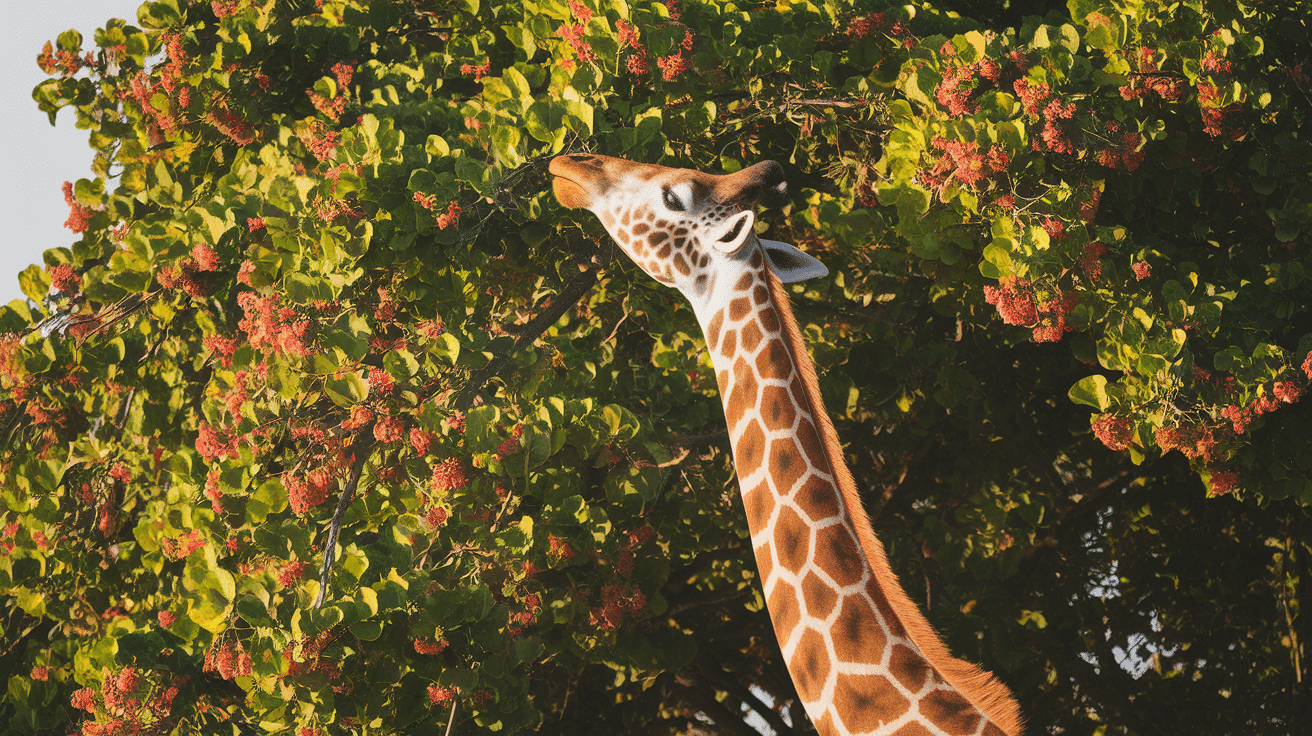
Grassland animals often have long legs compared to their body size. This body structure enables them to see over tall grass and spot danger from a distance.
Many grassland mammals have eyes positioned on the sides of their heads, allowing them to see predators from a wide angle.
Their ears can turn in different directions to catch sounds from all around. Body size also matters; some animals remain small to conceal themselves in the grass, while others grow large to defend against predators.
Body Structure Advantages in the Open Plains:
- Giraffes: Their long necks allow them to feed on treetops that other animals cannot reach.
- Pronghorns: Their eyes, positioned on the sides of their heads, provide nearly 360° vision.
- Kangaroos: Strong hind legs enable both speed and energy-efficient movement.
- African Elephants: Their large ears help regulate body temperature in hot, grassy environments.
2. Speed and Movement Adaptations
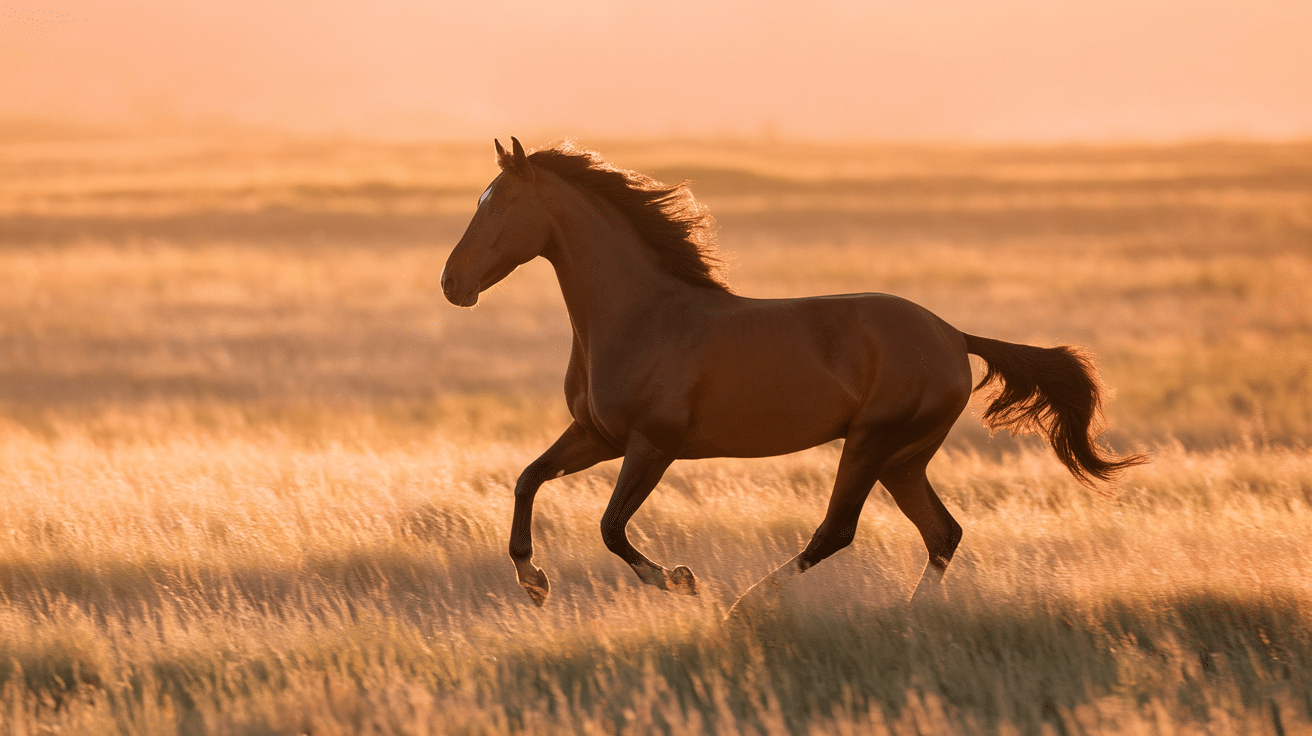
The open nature of grasslands makes quick movement important for survival. Animals like zebras and horses have limbs built for running, characterized by reduced toes and stretched legs.
Facts:
- The Thomson’s gazelle can run at speeds up to 60 mph and make sharp turns to escape lions.
- Jackrabbits employ a zigzag running pattern and can jump up to 10 feet in a single leap.
- Horses have single-toed hooves that act like natural running shoes, allowing them to move quickly across hard ground.
- Servals have the longest legs relative to body size of any cat, allowing them to jump and catch birds in mid-air.
- Wildebeests can run within minutes of birth, a must-have skill when born in open grasslands.
The saying “run for your life” takes on literal meaning for these grassland residents!
3. Camouflage and Protective Coloration

Grassland animals use color and patterns to camouflage themselves from predators and prey. Tan, brown, and yellow colors match the dry grass and help animals blend in with their surroundings.
Some birds have spotted feathers that look like shadows on the ground. Baby animals often have different colors from their adult counterparts, with spots that help them blend in while resting in the grass.
How Animals Hide in Plain Sight:
- Lions: Their tan coats blend seamlessly with dry grass, making them almost invisible when stalking.
- Killdeer birds: When threatened, they fake a broken wing to lead predators away from nests.
- Leopards: Spots break up their outline when hiding in patchy shade.
- Plains zebras: Their distinctive stripe pattern makes it difficult for predators to single out an individual during a chase.
- Quail chicks are born with mottled brown feathers that blend perfectly with soil and dead leaves.
4. Feeding and Digestive Adaptations
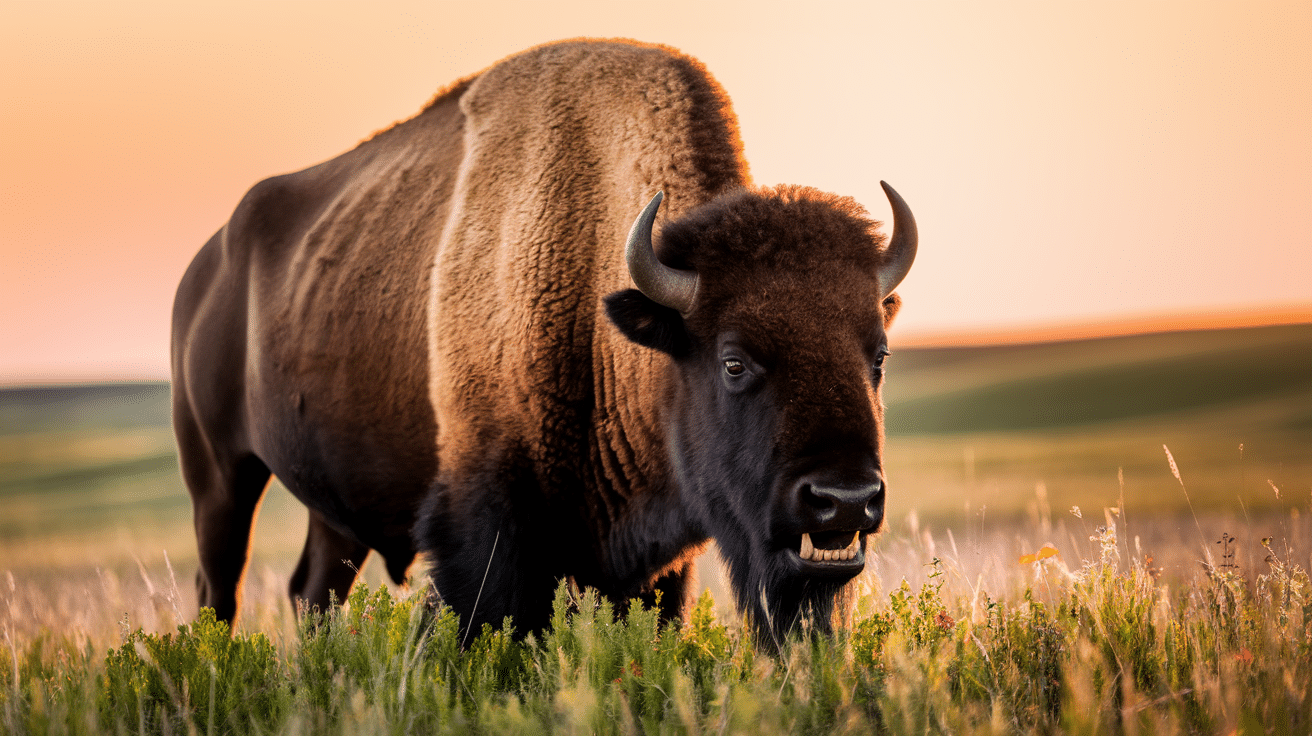
Grass proves tough to eat and hard to digest, so plant-eaters have developed special tools. Strong, flat teeth with ridges help grind down tough grass stems.
Many grass-eaters have multi-chamber stomachs with helpful bacteria to break down plant matter. Some animals, such as rabbits, consume their food twice to extract all the nutrients.
Examples:
- Bison have broad, flat teeth perfect for grinding tough prairie grasses. Their digestive systems contain helpful bacteria that break down plant matter humans cannot digest.
- Termites living in African grasslands build tall mounds with built-in air conditioning. Inside, they cultivate fungus gardens that aid in their digestion of wood.
- Aardvarks have tube-like snouts and sticky tongues specialized for eating ants and termites. They can consume up to 50,000 insects in one night.
- Giraffe tongues reach up to 21 inches long and are tough enough to grab leaves from between thorns.
- Antelopes have multi-chambered stomachs that function like internal fermentation vats, allowing them to extract nutrients from low-quality plants.
5. Seasonal Adaptations in Grassland Animals
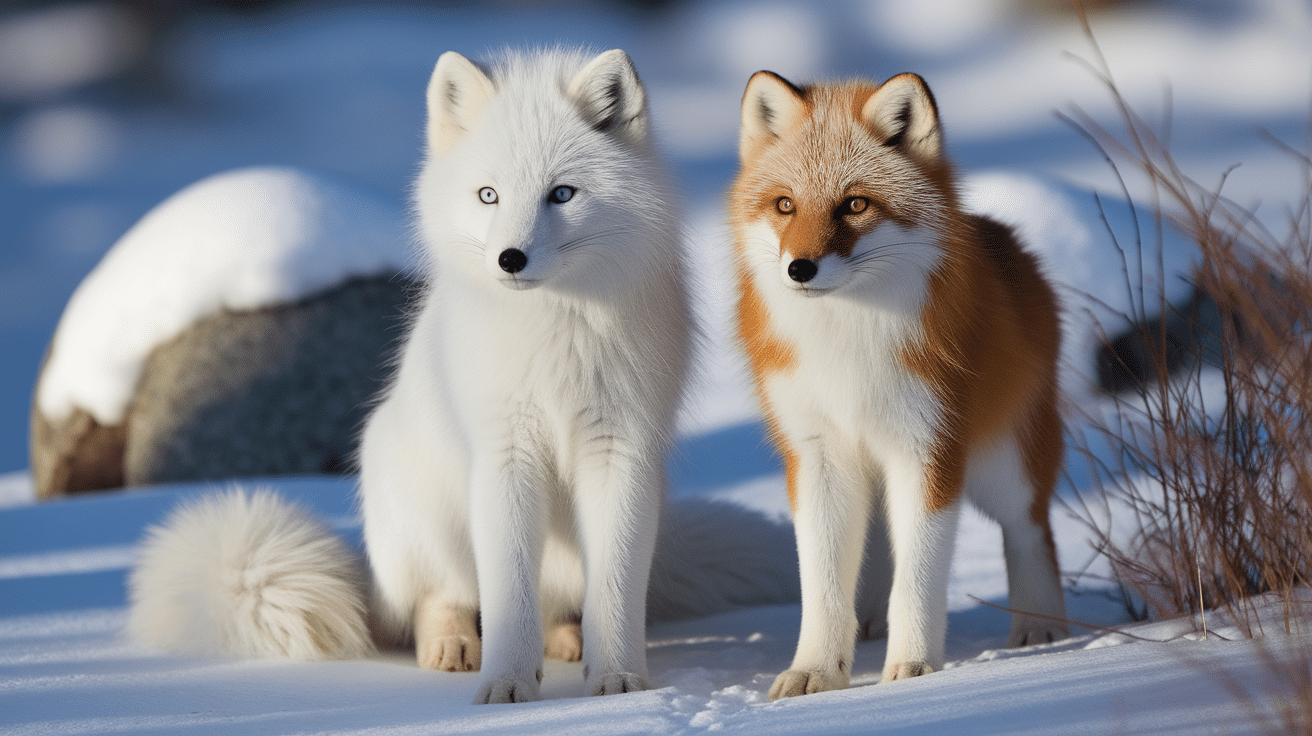
Grassland animals must deal with changing seasons and weather patterns. Some animals grow thicker fur in winter and shed it in summer to regulate their body temperature.
Some build up fat stores during good times to help them through food shortages.
These timing-based changes enable grassland animals to match their needs with the availability of resources throughout the year.
Strategies and Tactics Followed:
- Winter Strategies: Arctic foxes change their coat color from brown in summer to white in winter, providing year-round camouflage.
- Summer Tactics: Meerkats take turns standing guard in the hot sun, rotating duty to prevent overheating.
- Drought Response: African bullfrogs can stay buried for up to seven years, wrapped in a water-saving cocoon until rain returns.
- Migration Masters: Wildebeests follow rainfall patterns across the Serengeti in massive herds of up to 1.5 million animals.
- Timing Specialists: Prairie chickens time their mating dances to the brief window when spring grasses are at the perfect height.
6. Burrowing and Shelter Adaptations
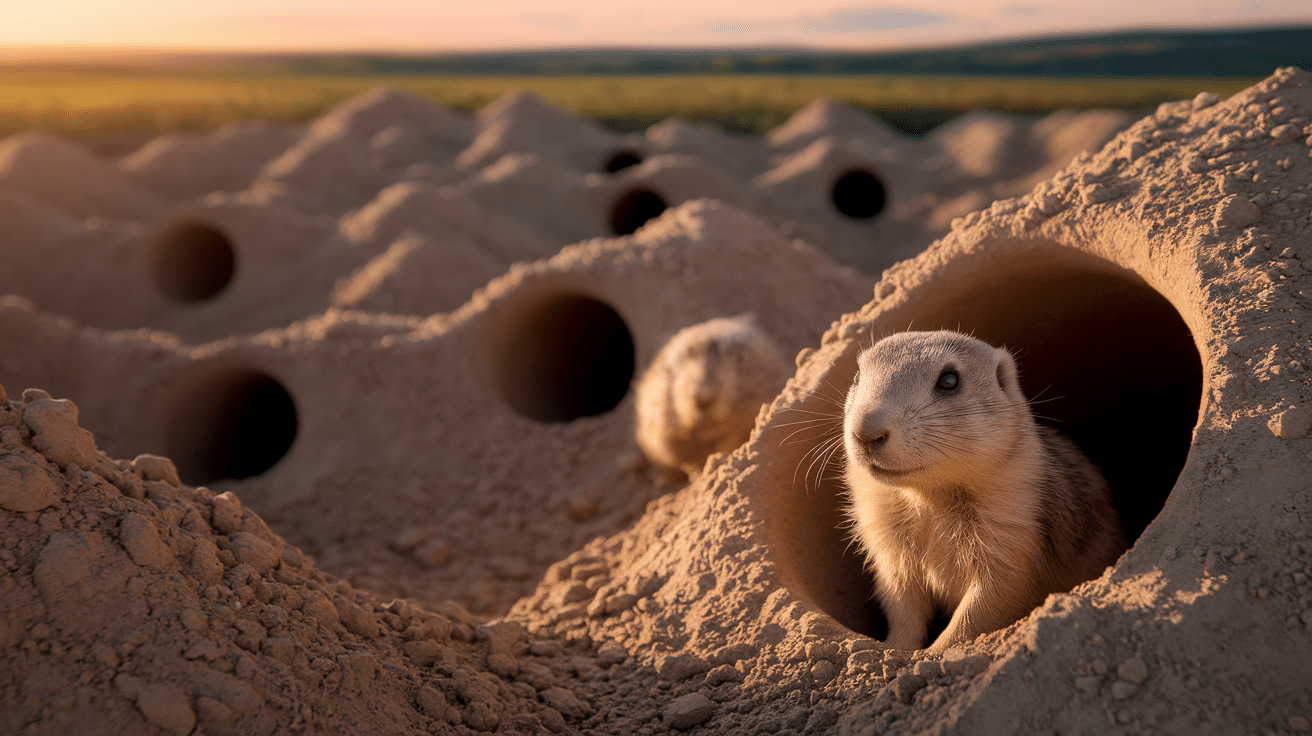
Without many trees for cover, grassland animals often dig homes underground. Prairie dogs create complex tunnel systems with rooms for sleeping, storing food, and raising young.
Meerkats use lookouts that stand guard while others forage for food. Strong front legs and claws help digging animals move dirt quickly and effectively.
These underground homes protect animals from extreme heat, cold, and weather events. They also serve as safe spots to hide from hunters that chase across the open plains.
7. Water Conservation Methods
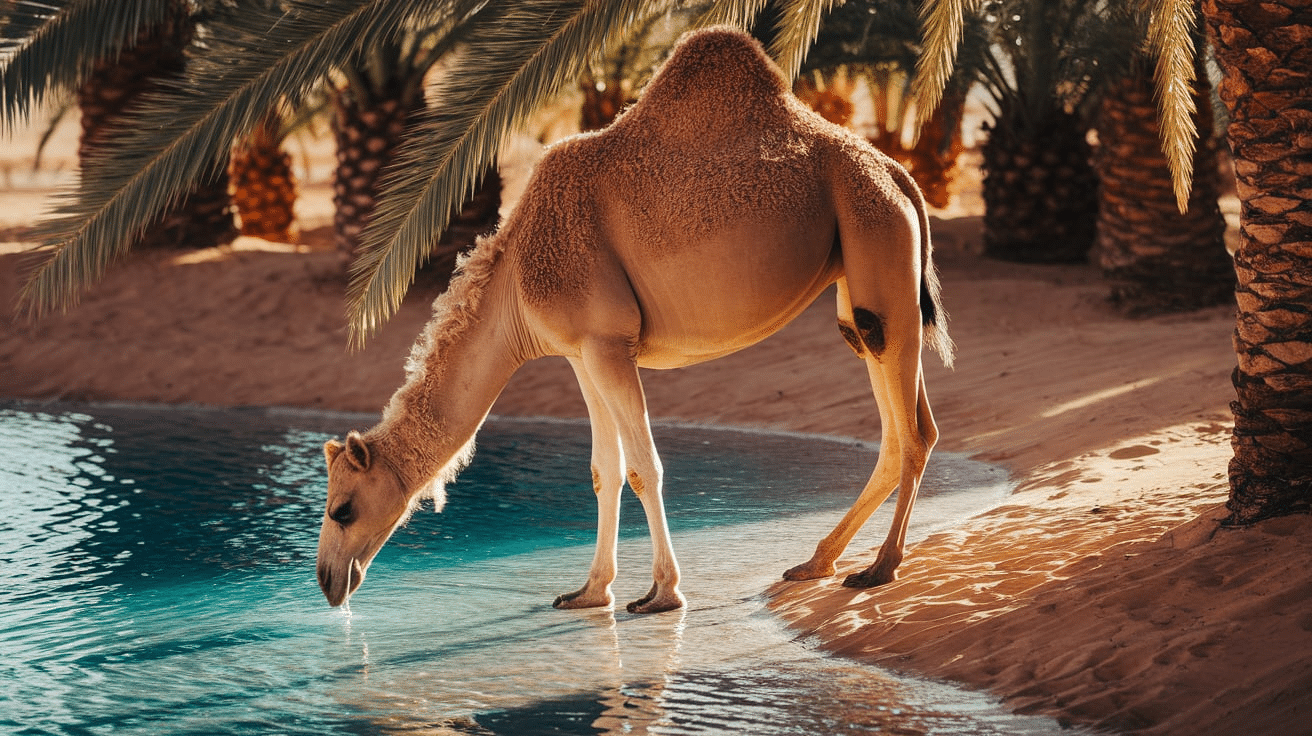
Finding water presents a significant challenge in grasslands, so animals have developed ingenious ways to conserve it.
Many extract moisture from the plants they eat rather than drinking from water holes.
Some animals have specialized kidneys that produce highly concentrated waste, thereby conserving water within their bodies.
Blood vessels near the skin help certain species cool down without excessive sweating.
Here’s how grassland animals stay hydrated:
- Oryx antelopes can raise their body temperature to 115°F before needing to sweat, saving precious water.
- Gerbils collect morning dew on their fur and then lick it off for a daily drink.
- Camels can drink up to 30 gallons at a time, then go for weeks without needing water.
- Jackrabbits have extra-large ears filled with blood vessels that help regulate their body temperature by releasing heat, thereby reducing water loss through panting.
FACT: The kangaroo rat never needs to drink water!
8. Social Behaviors as Survival Adaptations
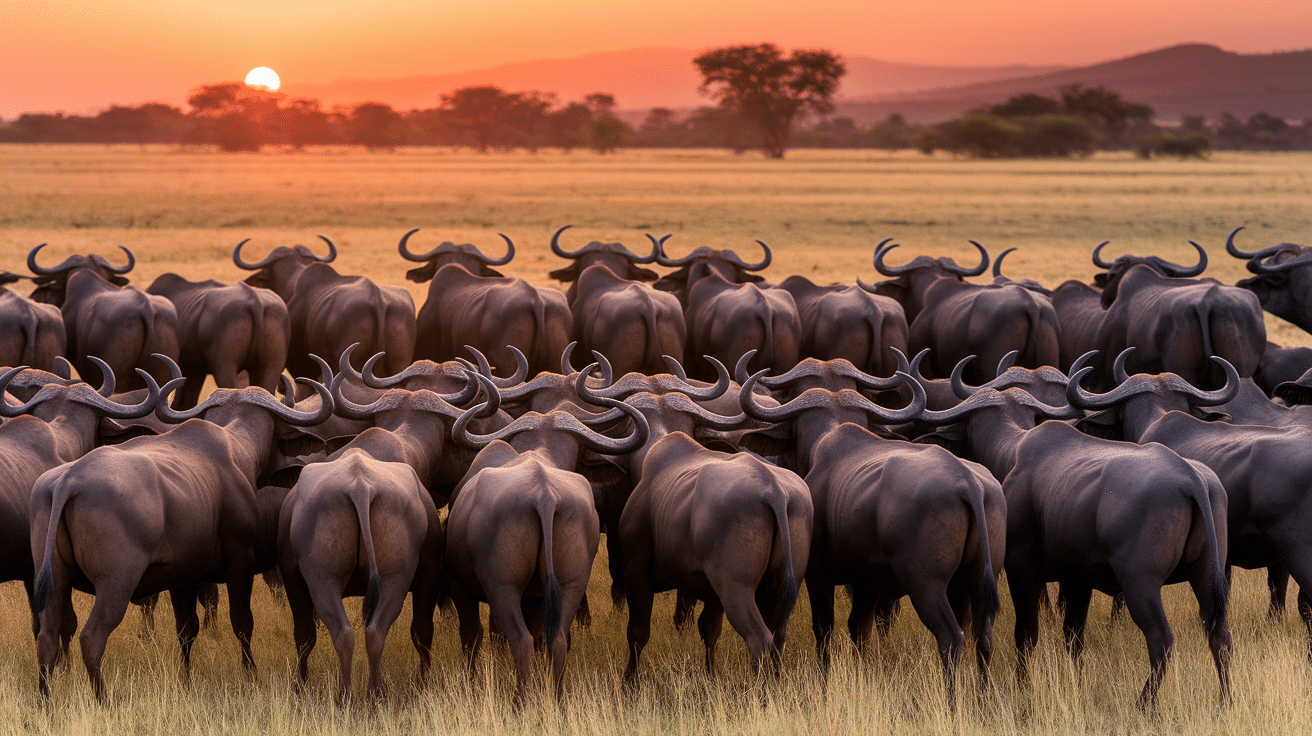
Many grassland animals live in groups for better safety. Herds of plant-eaters use many eyes and ears to spot danger sooner than a lone animal could.
Warning calls alert the whole group when a hunter approaches. Young animals stay in the middle of the herd, with adults forming a living wall around them.
These team tactics make it harder for hunters to succeed and help ensure that at least some members of the group will survive to the next season.
Team Tactics in the Grassland:
- Meerkats post sentries that call out specific alarm sounds for different threats, one call for land hunters, another for birds of prey.
- Buffalo form protective circles around calves when wolves approach, facing outward with horns ready.
- Zebras often mix with wildebeest herds, combining zebras’ sharp eyesight with wildebeests’ keen sense of smell.
- Baboons use a ranking system that decides who eats first but also who watches for danger a fair trade of food for safety.
- Bison calves stay in the center of the herd during storms, with adults making a wall against wind and rain.
Most Commonly Found Grassland Animals
These grassland champions have mastered the art of living where there’s nowhere to hide, developing incredible speed, senses, and survival strategies.
| ANIMAL | FUN FACTS |
|---|---|
| Bison |
Can run up to 35 mph, as fast as many horses |
| Zebras |
Baby zebras can run within an hour of birth |
| Lions |
Roar can be heard up to 5 miles away |
| Wildebeests |
A newborn can stand and run within minutes of birth |
| Kangaroos |
Cannot move backward easily |
Pro Tip: Want to learn more? Try watching nature shows about African savannas or North American prairies. You may also visit a local museum with exhibits on grasslands.
Conclusion
These animals have lessons to teach about living with limitations and making the most of what’s available, skills that are useful in any environment.
Grassland animals are incredible teachers! Just like us, they face daily challenges but never give up.
They work together, stay creative, and use their strengths to survive. Next time you feel stuck, remember these brave animals.
Want to learn more amazing animal stories? Follow our blog for weekly adventures!

